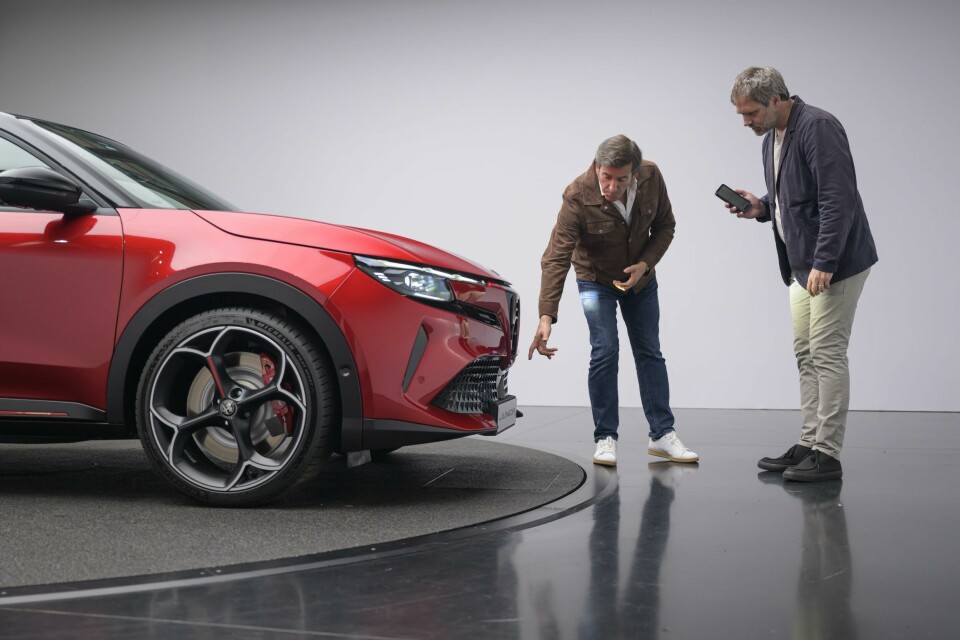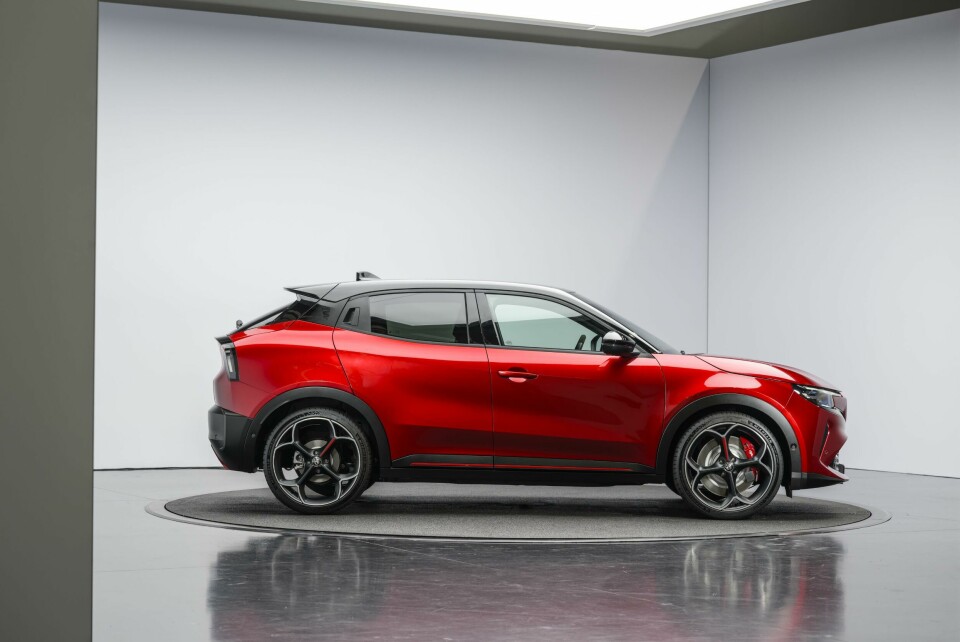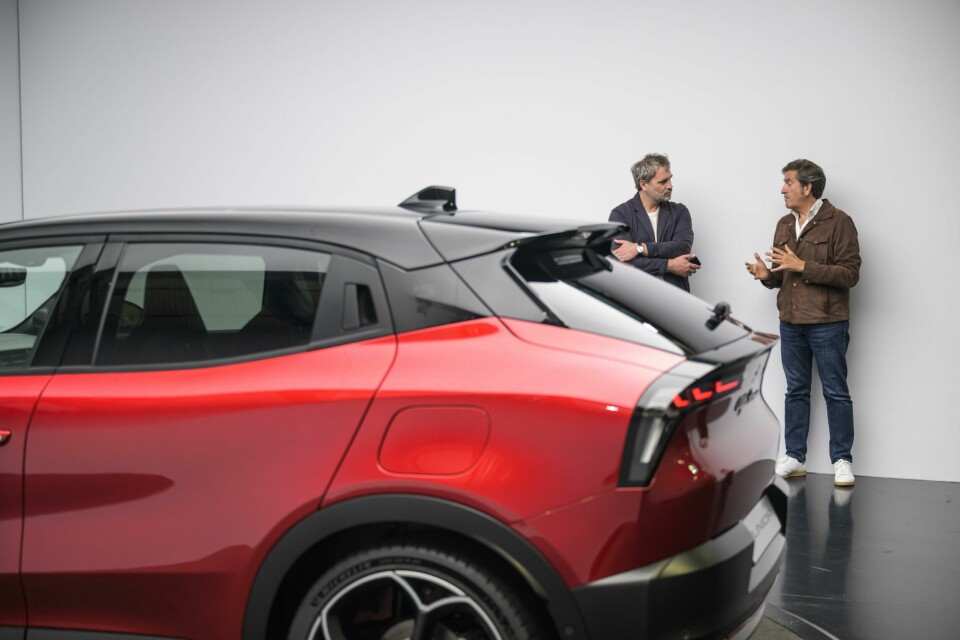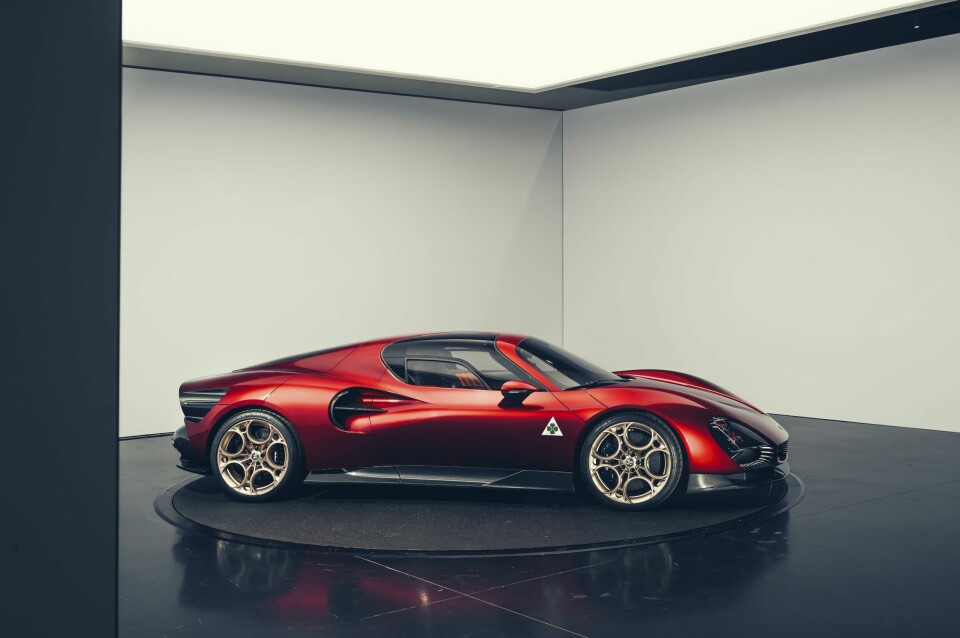
“Alfa Romeo is a car for egoists” – Alejandro Mesonero-Romanos
Car Design News visited Alejandro Mesonero-Romanos at Alfa Romeo’s studio in Turin to hear about the Junior and the designer’s hopes for the future of the brand
Not so long ago, for reasons that seem as inexplicable now as they did then, one of the most popular soft drinks in the world, Coca Cola changed its recipe. What followed was a sales disaster so complete that ‘New Coke’ was hastily withdrawn and the old one reinstated. Some counterintuitive types convinced themselves that Coke had sabotaged its brand on purpose to drum up sales.
They hadn’t, of course – it was a classic case of cock-up over conspiracy. Which brings us to the Alfa Romeo Junior (formerly Milano), the Italian OEM’s entry into the B-segment to address what was felt as a missing string to its bow.
“We had a big empty hole in our brand,” says design VP Alejandro Mesonero-Romanos, who has been at the helm of Alfa since replacing Klaus Busse in June 2021. “Doing a new Stelvio or Giulia, that is a story of continuity with a mature cast. With the Junior we needed to break a few rules to make it stand out and bring new people to the brand.”
It might be a new segment for Alfa, but the sporty stance, truncated rear end and confident matt black scudetto punctuating the front mask, are on point for what will be a fresh new design language going forward. There are four new models on the way, including a supercar, according to the designer. Mesonero-Romanos sees the Junior as a sporty hatch, albeit one that is a little taller than standard. That said, it is some 6cm lower than potential rivals.
The side profile is quieter but better-executed with a nice, subtle shoulder line that melts into the panel work or cuts a sharply defined vector, depending on the light
Coupled with this is the lack of the typical paraphernalia that characterises the segment: aluminium skid plates are not present and the flanks are carefully sculpted to push out the wheels. “Alfa Romeo is a car for egoists,” Mesonero-Romanos says. “That is why I was very clear to the designers: let’s not talk the SUV language, let’s do a hot hatch with 240bhp.”

Viewing the car in the studio reveals a subtle sophistication not fully conveyed by the press shots. The headlamps, thinish horizontal strips fractured into three LED elements, flank a smaller scudetto integrating the logo as a cutout which allows air to pass through in the manner of a grille. “It has to evolve as a functional element,” the designer notes. It’s shrunk too; homologation requirements mean that the offset registration plates that have become an Alfa signature, are persona non-grata. This smaller interpretation clears the way for a more conventional positioning. Without doubt, this is the most controversial design move amid a front face with a lot going on.
The side profile is quieter but better-executed with a nice, subtle shoulder line that melts into the panel work or cuts a sharply defined vector, depending on the light. Tracking the shoulder line from front to back reveals a gentle uptick towards the rear fender which then curves around the haunches to join the taillights. We first saw this on the Giulietta and it lends the back wheels more visual power. The glasshouse is framed in matte black as is the skirt line, which helps to break down the mass (a full-body colour version is an option). That said, this is not a particularly big car – 4.1 metres from top to tail.

And what about that rear end? Well, owing to the tension between boomerang tail lights and the vehicle’s stance, the Junior’s true height is more obvious. More intriguing is the coda tronca (chopped end) styling that Alfa first dabbled with in the 1950s with the Giuletta and more emphatically with the Giulia TZ a decade later. Ostensibly for aerodynamic motivations, it contrasts strongly with the complexity of the front mask. The black spoiler appears to melt into the rear window and the lamp to create a straightforward graphic.
Other nods to Alfa heritage come in wheel design, which echoes the Quadrifoglio. “The wheels play a big role on the overall stance of the car, but also the visual impact. We played with the icons. As you know, we had a telephone dial theme but this was a way to use the Quadrifoglio as a graphic element. There are four holes but they are a little more structured.”
Alfa Romeo is in a club of one: name another brand that makes supercars and city hatchbacks. In that context, it is easy to get dazzled by your own halo
Inside the Junior follows a similarly sporty theme with Mesonero-Romanos again reaching for distinctive Alfa signifiers. “I love the dashboards of Alfa Romeo because they look lightweight. Very thin, especially on the passenger side. Then we introduced some classic Alfa icons – like the double cannocchiale instrument cluster.” The Junior is driver-orientated with a high-console and a touchscreen angled at 11 degrees towards the driver.
There are some nice details too: alcantara fabrics, neat red stitching, quadrifoglio-shaped illuminated air vents and lightweight seats. If you sit in the driver seat, you are drawn into the hood by crease lines converging towards a point on the horizon. It will come as little surprise that the design team behind the Junior worked on the sensational 33 Stradale supercar.
The Junior is a vital car for Alfa Romeo. The brand is beloved but even the most dedicated ‘Alfisti’ would have to admit that quality issues and an uncharacteristic timidity, not to mention limited, product line-up have been self-inflicted wounds. The 33 Stradale was the halo car the brand was crying out for but volume sales are what’s needed. Head of product planning Daniel Guzzafame is candid about the challenges the brand faces.
“The main problems were twofold, both linked to not being a profitable brand. When you depend on others to give you money then you get inconsistency in the product and holes in the line up. If you consistently lose money, you are not credible. And sooner or later somebody will be tired of giving money.”

Guzzafame continues: “We need one launch per year, filling the lineup that you need to have in the premium arena. Four or five cars, you cover 90% of where the profits are made. And then on top of that, you can put the cherries on the cake, which are the supercars. I love the 4C with all of my heart. But if you have only that car in the showroom, then you cannot survive.” To empathise somewhat, Alfa Romeo is in a club of one: name another brand that makes supercars and city hatchbacks. In that context, it is easy to get dazzled by your own halo.
However, it is no longer enough to fall back on the passion the brand generates to paper over the cracks in reliability and quality. To its credit, Alfa Romeo has worked hard to iron out the creases in its reputation. “We are at a benchmark level recognised by the JD Power survey last year (2023) where we were number one ahead of Lexus, Porsche, everyone. Three or so years ago Alfa Romeo was last.”
In the immediate future, there will be a new Stelvio and Giulia next year, which will carry similar but softer light signatures to the Junior.


















